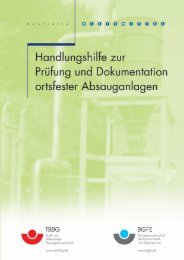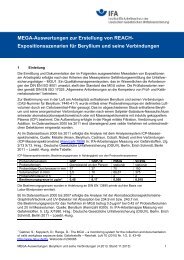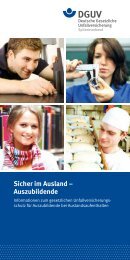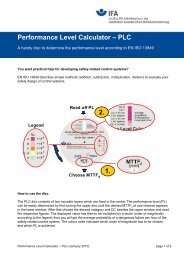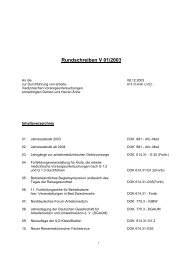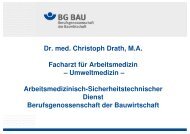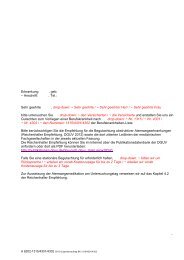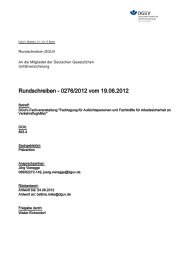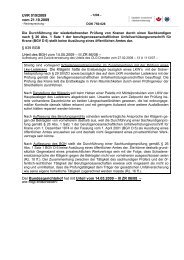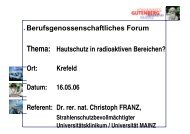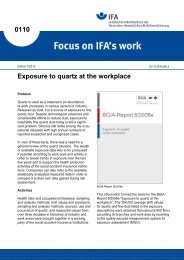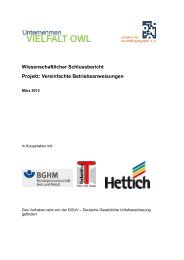Effectiveness of measures to prevent needlestick injuries among ...
Effectiveness of measures to prevent needlestick injuries among ...
Effectiveness of measures to prevent needlestick injuries among ...
You also want an ePaper? Increase the reach of your titles
YUMPU automatically turns print PDFs into web optimized ePapers that Google loves.
3 Descriptive epidemiology <strong>of</strong> NSI<br />
specialties accounted for 71 % <strong>of</strong> NSI reported by hospital physicians. Reflecting the<br />
composition <strong>of</strong> the study population, the most common devices causing NSI were sur-<br />
gical instruments and suture needles, and NSI were most likely <strong>to</strong> occur in the operat-<br />
ing room (63.9 %). Among respondents practicing non-surgical specialties, IV stylets,<br />
injection needles and blood collection devices were the most likely types <strong>of</strong> equipment<br />
<strong>to</strong> be involved in NSI [31].<br />
Work practices accounted for a substantial proportion <strong>of</strong> NSI in the study population <strong>of</strong><br />
Nelsing et al. Respondents identified use <strong>of</strong> hands rather than instruments during sur-<br />
gical procedures (e.g., manual tissue retraction during surgery) and/or inattentiveness<br />
as the cause <strong>of</strong> 29 % <strong>of</strong> 689 NSI due <strong>to</strong> surgical instruments, and recapping used<br />
needles was the identified cause <strong>of</strong> 19 % <strong>of</strong> NSI <strong>among</strong> internists. Similarly, 35 <strong>to</strong><br />
50 % <strong>of</strong> NSI caused by IV stylets, injection needles and blood collection devices were<br />
attributed <strong>to</strong> poor work practices, suggesting both a high level <strong>of</strong> self-awareness <strong>of</strong><br />
risky behaviors <strong>among</strong> Danish physicians and the possibility that training might afford<br />
an effective <strong>prevent</strong>ive measure [31].<br />
3.4 Summary<br />
Data from countries reporting NSI surveillance activities show consistent patterns <strong>of</strong><br />
risk <strong>of</strong> NSI, and the patterns noted here are substantially similar <strong>to</strong> patterns noted by<br />
authors <strong>of</strong> literature reviews published over the last decade:<br />
�<br />
�<br />
�<br />
�<br />
As expected by simple probability, the largest categories <strong>of</strong> HCW and those<br />
with the most patient contact, nurses and physicians, were the most likely <strong>to</strong><br />
report NSI.<br />
NSI were most likely <strong>to</strong> occur in patient rooms and operating rooms, locations<br />
where sharps were most likely <strong>to</strong> be used.<br />
Risk <strong>of</strong> injury varied by the type <strong>of</strong> sharp equipment in use. These patterns should<br />
be interpreted with caution, as they do not account for differences in the under-<br />
lying frequency <strong>of</strong> use <strong>of</strong> various types <strong>of</strong> equipment.<br />
Two common activities leading <strong>to</strong> NSI were inappropriate use or disposal <strong>of</strong><br />
equipment. It is likely that <strong>injuries</strong> resulting from these activities can be <strong>prevent</strong>ed<br />
Report „Needlestick <strong>injuries</strong>“ 27



